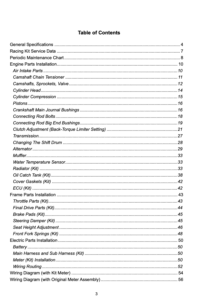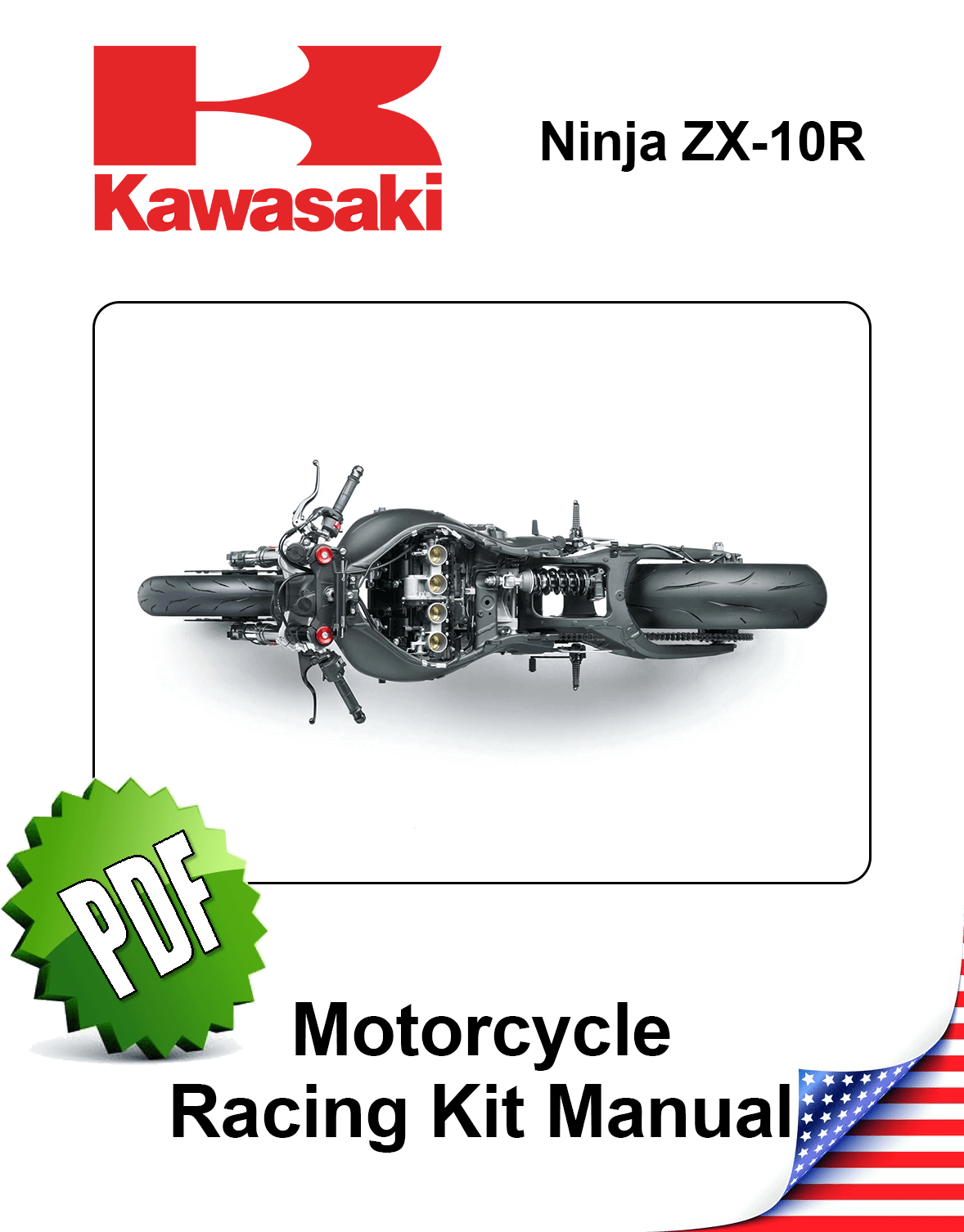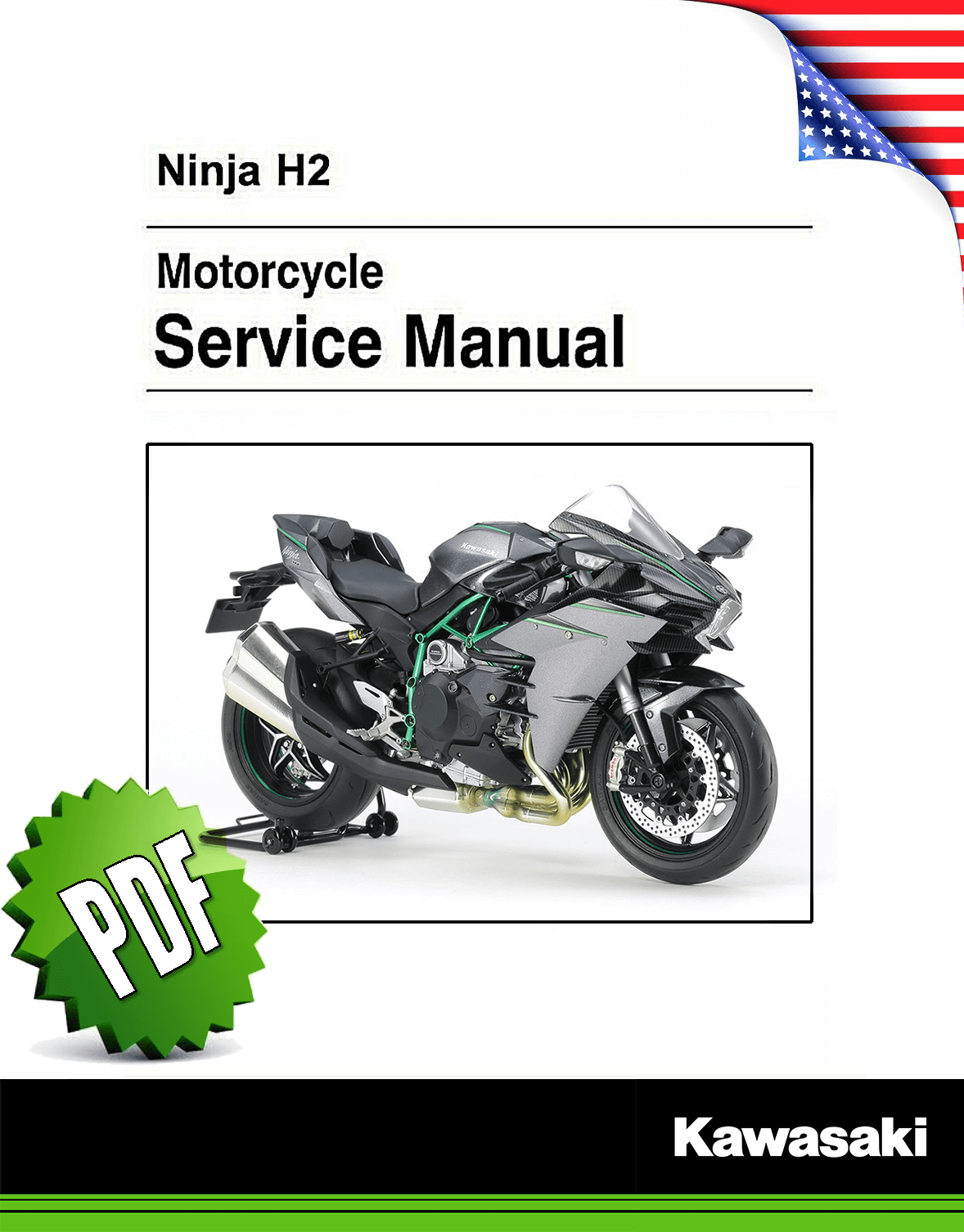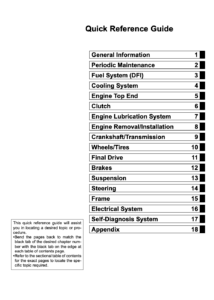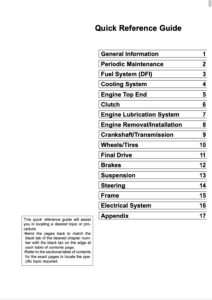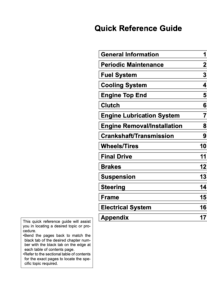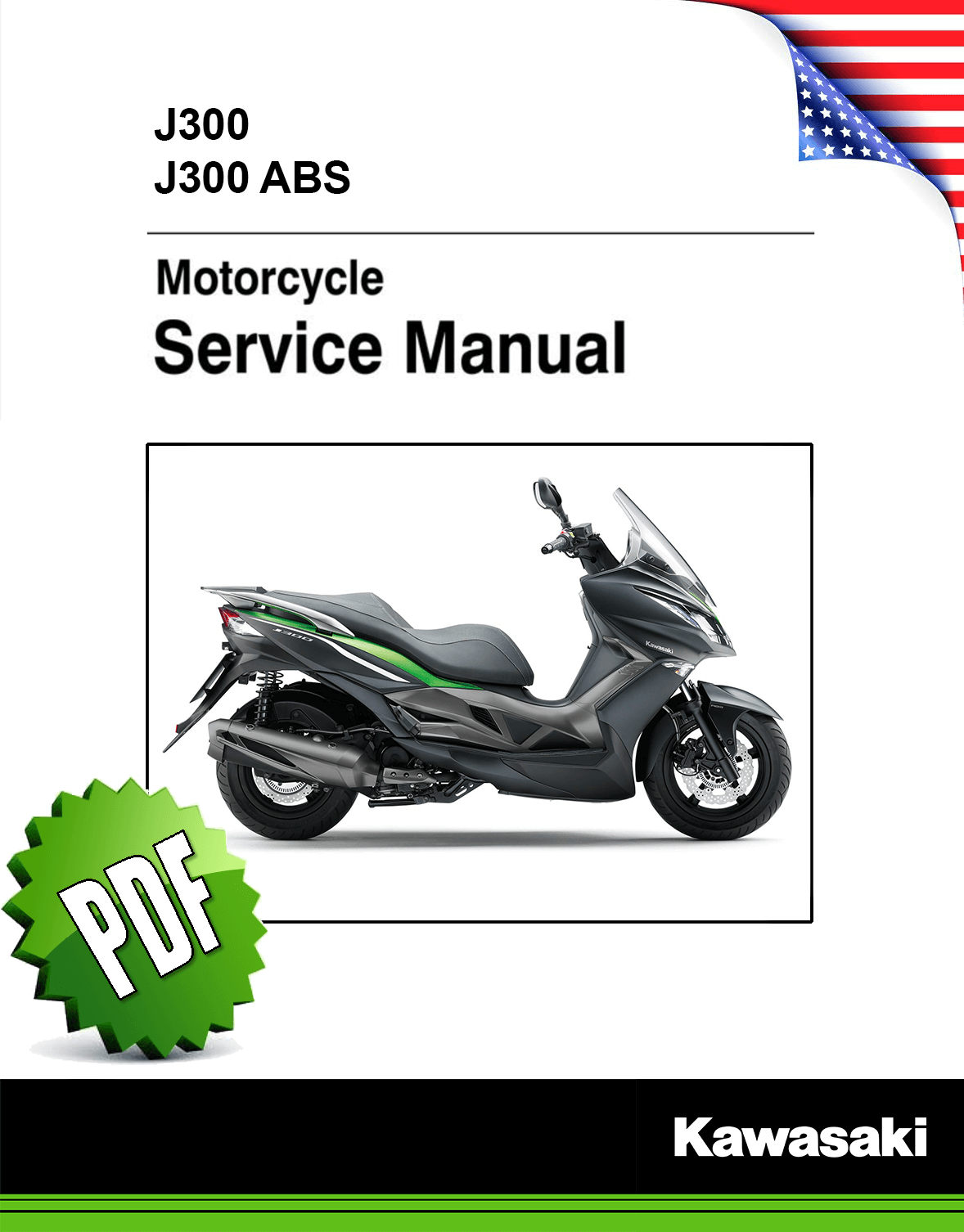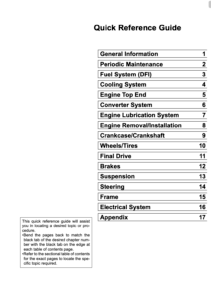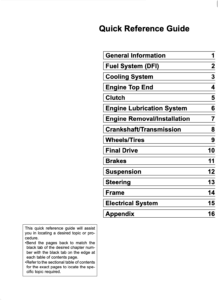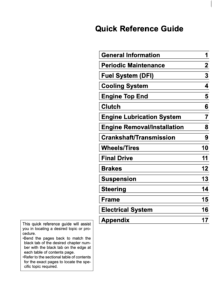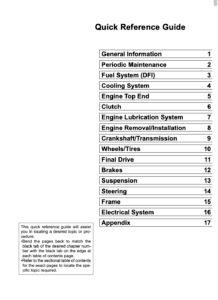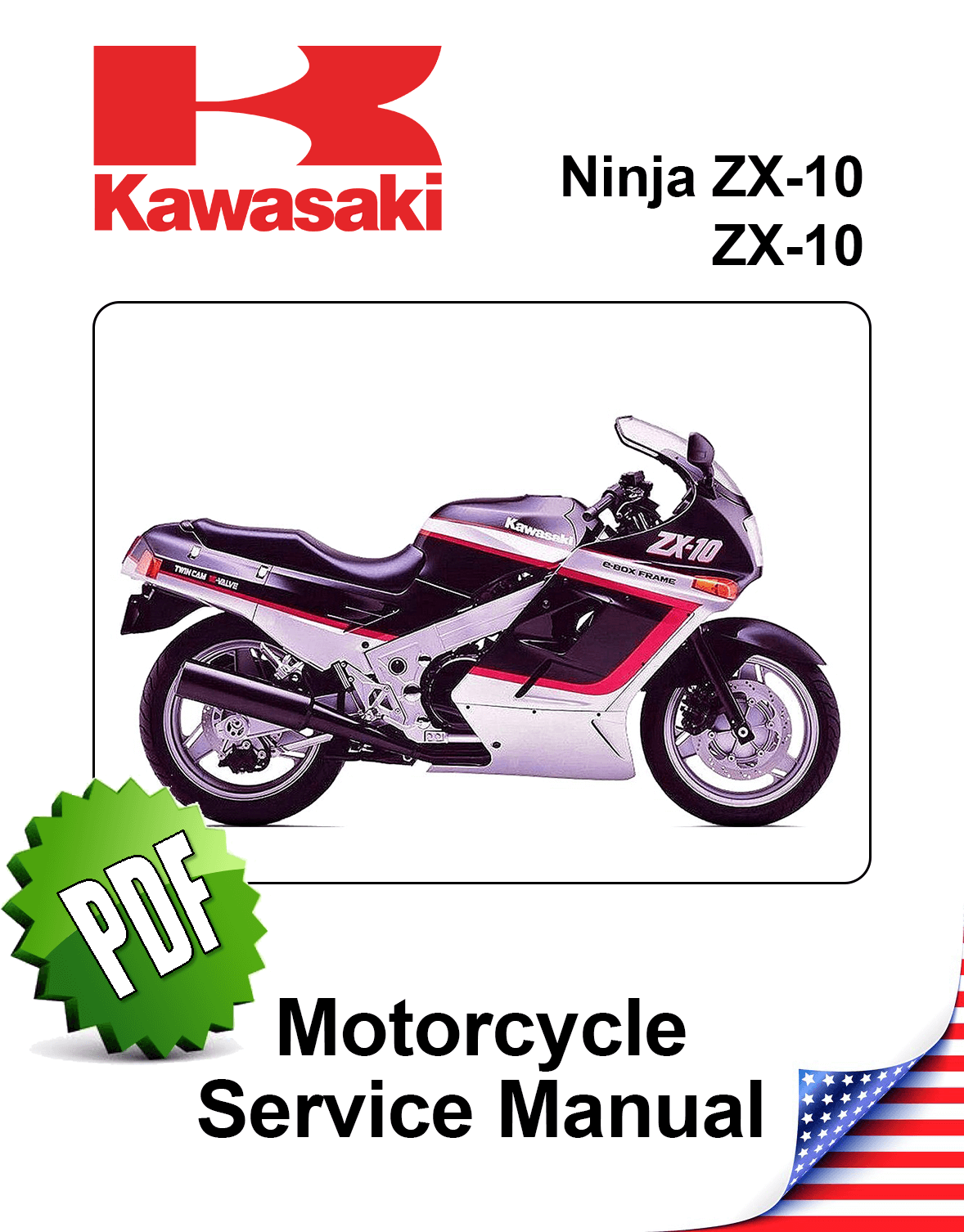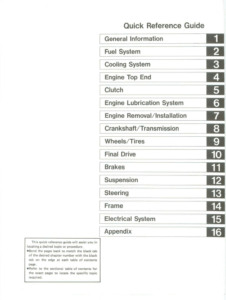Complete PDF version of the Service Manual for the Kawasaki Ninja H2. A MUST for every H2 owner.
Download: Immediately after payment!
OEM Original factory workshop manual.
Models covered by this manual: 2017 to 2021
Number of pages: 835 pages
Table of contents:

This PDF repair manual can be downloaded right after the payment process in complete, on the device of your choice.
We do not offer printed manuals, for the following reasons:
- it is more eco-friendly to use a digital version
- your manual never gets dirty or greasy
- you can always choose to print the specific page(s) you need to work on your bike
- you receive your manual immediately after payment
- it is searchable

Kawasaki Ninja H2
The Kawasaki Ninja H2 is a “supercharged supersport” class motorbike in Kawasaki Heavy Industries’ Ninja sportbike series, with a variable-speed centrifugal-type supercharger. The Ninja H2R track-only model is the fastest and most powerful production motorbike on the market, with a maximum output of 310 horsepower (230 kW) and 326 horsepower (243 kW) with ram air. The H2R has half the power of the quickest street-legal bikes, while the Ninja H2 has a lesser power output of 200 hp (150 kW)–210 hp (160 kW) with ram air.
The 750 cc Kawasaki H2 Mach IV, an inline triple released by Kawasaki in 1972 to “disrupt what it perceived as a sleeping motorcycle industry,” inspired its moniker.
Street-legal Ninja H2
The Ninja H2 sports rear-view mirrors instead of the track-only H2R’s wings. It also features plastic body panels rather than carbon fiber like the H2R. The street-legal bike is believed to have 200 horsepower (150 kW), with a lower supercharger boost than the H2R. The supercharger (with a lower boost level on the H2) and many other components are shared between the H2 and H2R, with the exception of the head gasket, cam profile and timing with ECU mapping, exhaust system, and the R’s clutch has two more plates. Cycle World measured a 1/4 mile pace of 9.62 seconds at 152.01 mph (244.64 km/h), a 0-60 mph acceleration time of 2.6 seconds, and a peak speed of 183 mph (295 km/h).
Instead of the track-only H2R’s wings, the Ninja H2 has rear-view mirrors. It also has plastic body panels instead of carbon fiber like the H2R. The street-legal motorcycle is expected to have 200 horsepower (150 kW) and a lower supercharger boost than the H2R.
The H2 and H2R share the supercharger (with a lower boost level on the H2) and many other components, with the exception of the head gasket, cam profile and timing with ECU mapping, exhaust system, and the R’s clutch has two additional plates. Cycle World recorded a quarter-mile time of 9.62 seconds at 152.01 mph (244.64 km/h), a 0-60 mph acceleration time of 2.6 seconds, and a top speed of 183 mph (295 km/h).
For 2018, Kawasaki introduced the Kawasaki H2 SX, a sport touring variant of the H2 with a claimed wet weight of 256.1 kg (564.5 lb). The Kawasaki H2 SX SE, which has a reported wet weight of 260.0 kg, has features that are optional on the base model H2 SX (573.3 lb). With updated throttle bodies, camshafts, crankshafts, pistons, cylinders, and cylinder heads, as well as a new exhaust system, the goal is to increase mid-range torque. In addition, the intake system and supercharger impeller were overhauled. A bigger fuel tank, rear trellis subframe, and panniers add 19 pounds to the bike’s weight (8.6 kg).
For 2019, the H2 gained a power boost of 15% thanks to changes to the intake, plugs, ECU, air filter, and other components. There is new all-LED lighting and a unique top coat on the paint that is said to be self-healing and capable of smoothing over minor scratches in warmer circumstances. Brembo Stylema calipers that are lighter and smaller, a new TFT screen, and smartphone connectivity that provides vehicle information such as GPS route information, speed, rpm, gear position, fuel mileage, fuel level, and odometer are all new. Furthermore, the 2019 H2 SX SE+ model includes Electronic Control Suspension.
Speed record
On August 12, 2018, rider Shigeru Yamashita set a 202.743 mph (326.28 km/h) speed record at the Bonneville Speedway with an unofficial team of Kawasaki employees (known as Team 38) in the Southern California Timing Association (SCTA) P-PB 1000 class for under-1,000 cc displacement production supercharged motorcycles with limited modifications. On August 15, he set a new speed record of 209.442 mph (337.06 km/h).
Source: Wikipedia
